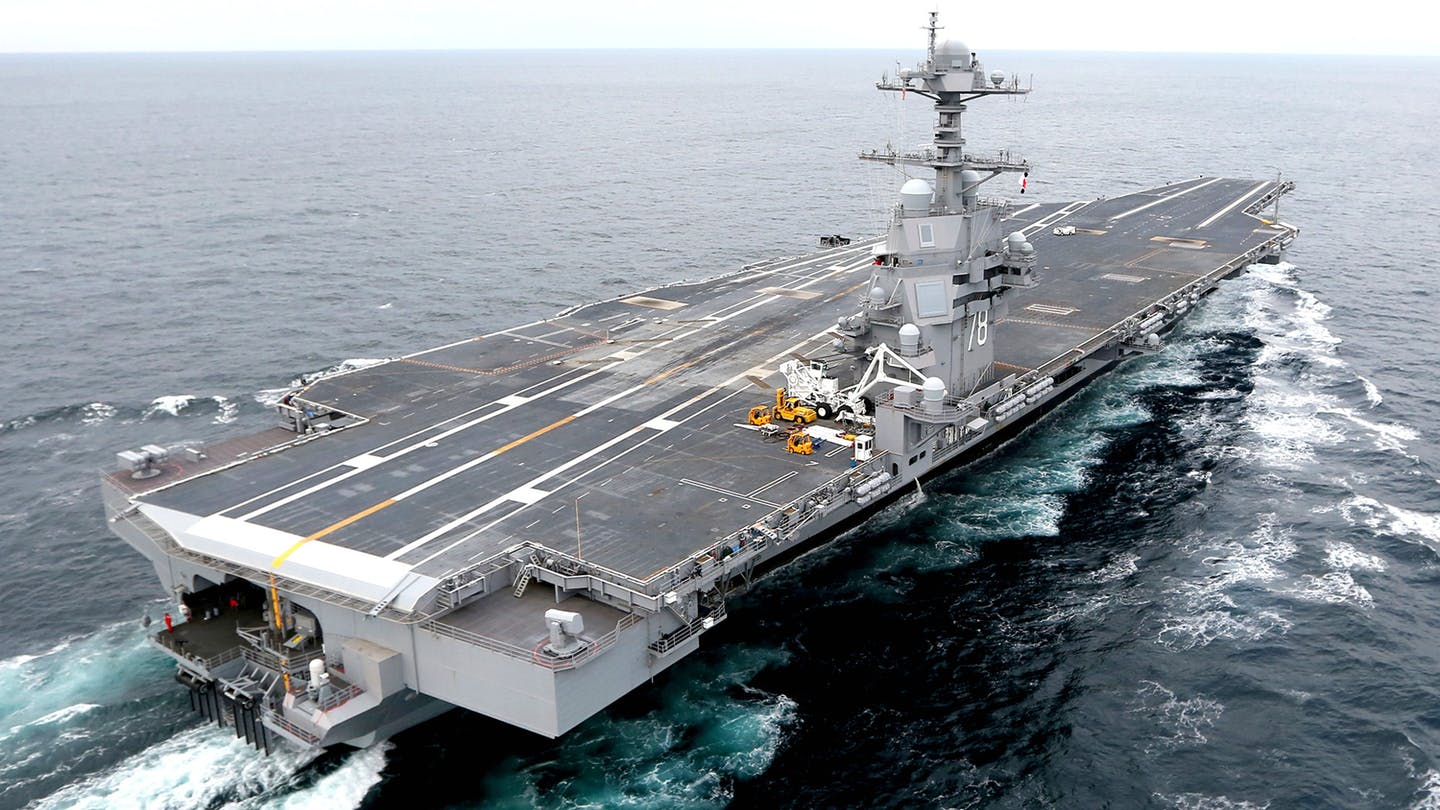One of the hottest debates in the world of defense procurement and strategy surrounds the role that aircraft carriers will play in the future, one in which their ability to operate within striking distance of enemy shores is increasingly questioned. This issue has many facets, including air wing composition, the physical size of the carriers themselves, their propulsion type, shipbuilding capacity, force size, and more. Price is also a huge factor. With the troubled Ford class supercarrier topping out at around $15B for a single hull, competing priorities like the massively expensive Columbia Class nuclear ballistic missile submarine and the Navy’s dream of substantially expanding its surface combatant fleet are putting the viability of America’s current supercarrier concept of tactical naval aviation power projection ever more in question.
In a fabulous story by Breakdefense.com’s Paul McLeary, the future of America’s carrier force structure is brought into focus, or at least the planning for that future force structure. I highly suggest you read the piece in full, but it is worth breaking down some of the main points here as they will have a substantial impact on many of the topics we have been covering or will be covering going forward.

Some of the key points include:
- The Future Carrier 2030 Task Force will soon be introduced and will partake in a six-month-long study looking at the viability and survivability of aircraft carriers in reflection of emerging threats that put into question carriers’ their ability to project relevant combat capability forward during a peer-state conflict. This task force will look to predict threats beyond 2030, as well as the shipbuilding sensitivities that will emerge during that time period. The findings could deeply influence the Navy’s future aircraft carrier procurement and operations strategy.
- The study will run in conjunction with the ongoing deep-dive into the Navy’s force structure and shipbuilding requirements over the next 30 years that is being headed-up by Deputy Defense Secretary David Norquist. Acting Navy Secretary Thomas Modly is heading up the Future Carrier 2030 Task Force. The two initiatives could end up being at odds with one another, at least in some manner.
- Four Ford class supercarriers are currently planned, the last of which will be delivered around 2032. It is possible, if not likely, that the class’s procurement will end at that time and new class will take its place. This will likely be a cheaper and smaller design.
- A possible shift in the use of carriers from front line operations to controlling large swathes of ocean and bolstering critical supply lines during a peer state conflict is emerging.
- USS Dwight D. Eisenhower and her strike group trained for such a role in the run-up to the Army’s massive Defender-Europe exercise. The “Ike” and its escorts simulated crossing the Atlantic under contested conditions—a reality that the Navy says has already manifested itself. This was the first exercise of its kind since 1986 and included fighting off simulated submarine, electronic warfare, and aerial attacks. In other words, the ships basically fought their way across the Atlantic and provided protection for a convoy loaded with land warfare reinforcements.
- The Navy’s current carrier deployment model is considered broken and it is restricted by the force structure that underpins it.
- The Lightning Carrier concept, which The War Zone was the first to report on, is being closely examined as a way to bolster and help redefine the Navy’s power projection options. Also, pushing detachments of F-35Bs ashore to austere airfields could be part of future air combat fighting doctrine. These are all issues that we have discussed before, but it appears they are picking up steam within the Pentagon.
- Amphibious ships turned Lightning Carriers would not replace the Navy’s big-deck carriers, but any carrier that comes after the Ford class is likely to be smaller.

Of course, our readers are familiar with the arguments in favor of smaller carriers and the benefits they could bring to the U.S. Navy, although it remains a bizarrely heated topic. While even stepping away from 100,000-ton displacement supercarriers to smaller, but still large, 65,000-ton designs is seen by many as sacrilege, pivoting from nuclear back to conventional fuel is even more controversial.
Regardless, it seems that the powers that be within the Pentagon are finally coming to terms with the opportunity cost imposed by chasing an all supercarrier procurement strategy and how unsustainable it has become. Even disposing of nuclear-powered supercarriers once their service lives have ended is becoming a hugely costly endeavor. This is in addition to the concerns surrounding investing so much into so few hulls in light of the shifting geopolitical winds and America’s potential enemies’ growing anti-access, area-denial capabilities.

As it sits now, we could be just six months away from the emergence of a major shift in American naval strategy, one that could degrade the notion that huge nuclear-powered aircraft carriers are the best way of achieving America’s national defense goals.
Contact the author: Tyler@thedrive.com
